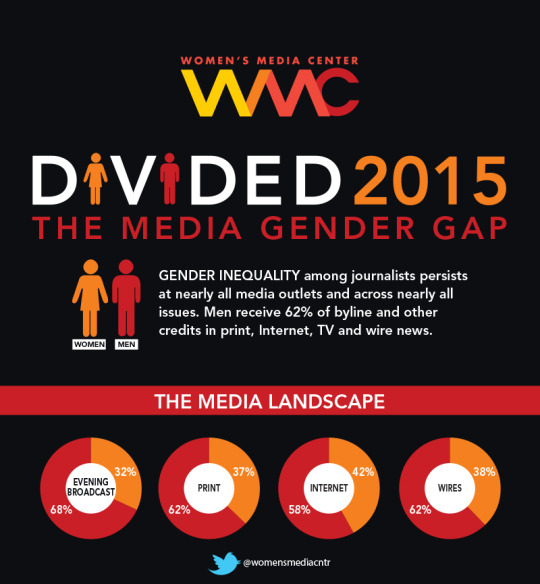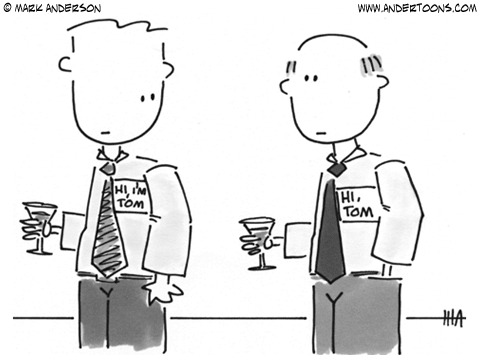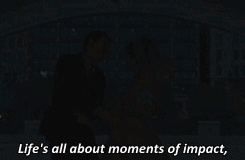Text
Making Sense of Digital Video in a TV Landscape
Within media buying, there are multiple ways that experts analyze and recommend media options, particularly as it pertains to specific media types like TV or digital. To-date, most media buyers and media sellers specialize in a few types of media, but are not trained to be holistic practitioners. Understanding the complexities and layers of not only executing a media buy, but knowing how to do so effectively and strategically takes years of learning and practice. For that reason alone is why it’s more common to plan or buy media by type, let alone the fact that most media platforms have been built to support the strengths of their type and are not focused on integration:
· Television – A visual and audial medium that was not dreamt of decades ago as an experience that would be accompanied by live-Tweeting
· Radio & Newspapers – Audial and visual mediums, made to support local communities through information, were not created with a vision of aligning messaging output with a new billboard campaign
· Digital – A visual and audial medium that has transformed, but whose initial purpose is information-sharing versus being advertising-led
While this glosses over all media types, including billboards, it goes to show that media types were proliferated to serve singular purposes (with or without advertising), and have not necessarily grown comfortably to support seamless distribution across multiple platforms by media companies. At the end of the day, the consumers being targeted with advertising don’t care about your strategy, they care about their own habits and preferences, so media buying must be audience-led versus platform-led. With TV being the medium where the most advertising dollars are still spent, and digital being the fastest-growing and most-accessed medium by consumers, strategies to better align the buying of one with the buying of the other will serve to improve the end-user experience.
Television will, and should, continue to be a driving force in media buying where mass reach is needed within a target market (defined by geo or demo). TV is habitual for users and despite advancements like fast-forward, the experience of sitting on a couch in one’s home to watch a video-experience in front of them is still routine. But the consideration of advertising as being video-centric (versus thinking of TV ads and digital video ads distinctly) helps to bridge the gap between TV and digital. To find ways to get a video in front of a target market on their large, in-home screens, is the low-hanging fruit. Look to complement TV bought on broadcast and cable, always, with a digital video buy strategy targeting the same market: Smart/Connected TV, Full Episode Players (like ABC Go or Hulu), and On Demand are all digital buys that behave the same way as their broadcast and cable counterparts.
There is no ideal number to assign to a budget allocation for digital video on TV screens that makes sense for all markets. Many decisions will be strategic calls that are market-led and therefore custom solutions. For example:

Like with any media buy, the specialist must analyze the habits of the market being targeted with the campaign to determine what mix is smart to maximize reach and impact with the target audience.
Digital media buying extends beyond household-level video though, and includes online (or mobile/tablet) video, as well as banner ads, search ads, paid social, or any other type of paid or guaranteed digital media. The ads being produced will be different than video, but despite needing to execute separate creative strategies from TV, or other media types, the digital media buys across these channels can be strategized to support TV media buys and therefore increase the impact with the target audience.
Digital media buyers should have an understanding of what the reach and frequency is of their buy. For years, this level of information wasn’t always available via digital, however with most platforms today, this number should be relatively easy to estimate with some accuracy. These metrics become important as digital media buys begin to better demonstrate what percentage of a market they can reach with a planned spend or channel selection, to help make better buying decisions. This is similar to the need that TV buyers have to understand the reach and frequency of their TV buys to make better channel or program selections with their spot strategy for maximum impact.
Ensuring that the reach of the digital buy is measured or estimated for a media buy is essential to strategizing the frequency for that buy. Digital buys can borrow this same approach, but should look to increase frequency of exposure compared to TV levels as digital impressions can be ignored more easily than TV impressions are. Just like TV, digital buys can look to prioritize market reach over frequency to the target audience or market; the frequency needs to be higher as a baseline for digital than TV though as a rule of thumb.
Some media providers are looking to change these experiences and transform media buying to be more screen-agnostic. They are becoming attuned to the need to create multi-channel content which provides media buyers options for buying cross-platform to reach the same audience but on all potential screens they are using. And media measurement companies are finding new models and technologies to monitor and understand true audience reach and frequency regardless of screen type.
Companies like Bloomberg understand that the content is what their audience craves, and that their audience has grown and changed to expect to access that content wherever they are. Bloomberg news and information can be accessed in print, via satellite radio, on TV, online, and of course – their terminals. Terminals aside, the rest of their media offerings provide the same type of news and information to their audience across all channels, but play to those channels’ strengths. Media buyers looking to reach financial decision-makers, e.g., could work with Bloomberg to target this audience with one budget, and one creative, across multiple screens (TV and digital) without having to shift strategy or even consider the tactics distinctly.
With this level of cross-screen reach growing and becoming more accessible, media buyers will increasingly be able to make decisions differently about their campaigns that more naturally include TV or digital as the cross-screen reach to the target market will be the determining factor; staying audience-led versus media-led.
ic"}]`q4�*
0 notes
Link
Once upon a time, you had to pay for your news. Nowadays online publishers are only able to publish free content (woohoo!), because advertisers fund them by purchasing spots on their websites. So before you consider downloading an ad blocker, make sure to think about how it negatively impacts the organizations providing you with free information.
- Jesse
0 notes
Video
youtube
Ever wondered how advertising has progressed from the days when Benjamin Franklin wrote newspaper advertisements? In this video, Mashable packs 250 years of advertising into 60 seconds, giving us all a little better understanding of how we got to where we are today.
- Jesse
0 notes
Link
Kim Kardashian may have more likes, but Jenna Marbles may have more interactive followers. This insightful article shows the importance of looking beyond the number of likes and followers when choosing an influencer to rep your brand.
- Jesse
0 notes
Video
youtube
Audience Awareness
A razor commercial pops on to the TV, showing a blade slowly caress a man’s already perfectly trimmed five-o-clock shadow.
And as a male watching this advertisement, I’m not interested. A close-up of another man’s face doesn’t motivate me to buy a razor (or any product for that matter), especially when it's all razor ads show.
Three years ago, The Dollar Shave Club, which ships razors to customers' houses every month, created the above advertisement that attracted my attention far more than any razor ad had before, and it turned out that others shared my opinion. Within 48 hours of this video’s YouTube release, 12,000 people signed up for its service.
This advertisement seemed to understand a rule that many razor brands seem to forget: know your audience.
The Dollar Shave Club was aware that mainly only young-adult males would be comfortable with signing up online for a new-age, monthly razor service. And they knew that they weren’t going capture this group’s attention with a toweled-man shaving himself in a bathroom mirror.
Instead, the DSC used humor and over-the-top confidence to bridge its audience’s interests to its product, referencing the “Keep Calm and Carry On” signs, ideology of not-overpaying-for-products, and parties. The razor is barely shown in the video and is never used. Who actually wants to watch a razor being used? Machetes, bears, and grandfathers are much more interesting.
And with 20 million YouTube views to date, the DSC is still going strong.
Audience analysis is essential to insights and strategy. Like the DSC, we get the need to thoroughly understand both the target audience and how to reach its demographic, putting the right message in front of the right people.
- Jesse
0 notes
Photo

Something strange... in the legislature. Who you gonna call? Media strategists!
According to this article, many corporations are now impacting congressional issues by hiring media strategists to influence the public’s opinions. We’re no replacement for lobbyists, but we can certainly help sway voters - and in turn the representatives they vote for!
- Jesse
0 notes
Link
The Facebook Awards, which recognize the most creative, innovative, and effective Facebook marketing campaigns, are out! With the ALS Ice Bucket Challenge grabbing gold.
After reading this article, I noticed that all of these campaigns have something in common. Despite varied content and goals, they all connected with me on a deep emotional level, invoking inner human urges to have fun, be creative, and further society.
In a social media landscape where users are constantly bombarded by ads, maybe touching the heart is what it takes to stand out.
- Jesse
0 notes
Video
youtube
What the Snuggie and #LikeAGirl Campaigns Have in Common
Remember those terribly annoying Snuggie advertisements? Do you also remember craving a Snuggie after seeing them?
Well rest easy, cause you weren’t alone. Five years after Snuggie’s release, 30 million Snuggies were sold, raking in $500 million in revenue. Snuggies were a huge success, especially considering that other sleeved-blankets such as Slankets already existed on the market.
Their success may be, in part, because Snuggie’s advertisements incorporated Monroe’s Motivated Sequence, a widely-accepted rhetorical structure used to motivate an audience to a call-to-action.
Harry Potter needs the Imperius Curse to motivate others. Monroe discovered that all humans need is five steps:
Step 1: Attention (grab the attention of your audience).
Step 2: Need (explain the problem and show how the topic applies to the psychological need of the audience).
Step 3: Satisfaction (present the solution to the problem).
Step 4: Visualization (illustrate in visual and detailed terms the effects of the solution).
Step 5: Call-to-Action (explicitly tell the audience what they can personally do to support your solution).
Apart from Snuggie commercials, you’’ll find this sequence anywhere from RFK’s “Remarks on the Assassination of MLK” (ranked as one of the top American speeches by American Rhetoric) to Procter & Gamble’s incredibly successful “#LikeAGirl” Facebook campaign.
I would also advise keeping Monroe in mind when listening to candidate’s speeches in the coming 2016 election. Hopefully you won’t be motivated to believe in something as pointless as the Snuggie.
- Jesse
0 notes
Photo

Inequality in the Media
Women not only earn less than men but also report less news than men do. “The Women’s Media Center’s research examined 27,758 pieces of content produced from October 1 through December 31, 2014.” On average, women received 38% of the byline and other credits on broadcast, print, internet, and wires mediums.
The significance? Media shapes the stories that are being told and listened to, developing American culture and ideology. If only half the demographic is writing these stories, then our culture is only getting half the perspective.
- Jesse
0 notes
Link
We spend a lot of time learning from experts in the industry so we can keep growing our point of view. Occasionally, we share our point of view with the industry. In this article for Campaigns & Elections, we explore how to make the most of non-electoral year dollars with public affairs and political media campaigns.
0 notes
Link
Love wins! Gay marriage is finally legal nationwide! In celebration, here are some warming ads. And congrats to all the Americans who are now able to marry their loved one!
- Jesse
0 notes
Text
Adding Value

We spend a large amount of time creating solutions and plans that are tailored to meet our clients’ specific needs. This means that we are constantly trying to blend our own expertise with the client’s vision to both add value and be as responsive as possible. Even methods that are tried and true, need to keep being tested to ensure they still work. Unfortunately, our friend above can’t say the same…and as much as we like fitting in, we’d prefer to distinguish from the rest of the Toms.
0 notes
Text
Our New Digs
We moved offices a few weeks ago and while this change is always exciting/fraught, for a company as young as InStrat it feels incredibly symbolic, as well. Now when we come into what can only be described as a swanky building downtown, we get the cheering sense that we are movin’ on up. As a celebration of our big change, we thought we’d share an image of the exact opposite of our new cappuccino-filled workspace.

0 notes
Text
Reporting Insights

As a media strategy firm a big part of our job is demonstrating the impact of an advertising campaign to the client. This reporting takes a variety of forms, from making sure that the campaign ran as ordered to showing the impact this execution had on the audience. At the end of the day, all of these little steps end up proving over and over again the value of advertising; the way that getting the right message out can genuinely change the way that people think about a product, a campaign, an issue, a candidate or even a family.
0 notes
Link
In honor of our new summer interns, we found an excellent article about the history of internships!
0 notes
Link
InStrat loves digital advertising. The take-home from this highly-anticipated report reflects what we see at the office every day:
Digital is growing in every possible way, 34% over the past year.
Mobile use is growing faster than a speeding bullet.
Content, and the ability to engage with it, is still king.
0 notes
Link
Are you someone who works in media and has a few free seconds? (You: HA). If so, Take the time to learn a little bit more about your history with this hilariously brilliant presentation.
0 notes